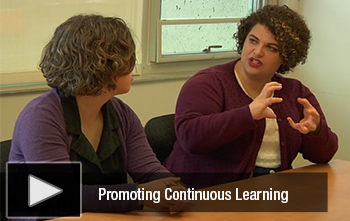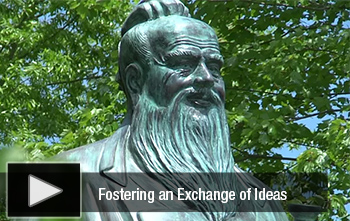Collaborative Learning, Strong Partnerships Yield Mutual Benefits in Mason PDS Model


AACTE’s Research-to-Practice Spotlight Series featuring the George Mason University (VA) College of Education and Human Development continues this week with two new videos exploring the effects of the college’s clinical practice model. These videos highlight the mutual benefits enjoyed by participants at both George Mason and its partner elementary schools as well as changes that teacher candidates and their mentors are seeing in their classrooms and in their teaching styles.
The strong partnership between the College of Education and Human Development at George Mason University (GMU) and its professional development schools (PDSs) brings benefits to all involved. Teacher candidates enjoy the yearlong clinical placement in a local school where they are immersed with the staff and community from the beginning and gain a real-world teaching experience. On the school side, teacher mentors who provide their expertise to help prepare candidates end up learning from their interns as well. Add in the benefit to schools of having many extra adults working toward common goals and the fresh perspectives gained by participating GMU faculty, and it’s easy to see why the PDS model is worth the effort to run.
Megan Tate, a master’s-level education student at GMU, enjoyed the connection she had with her school prior to her first day in the classroom. “We got to know a lot of teachers at the school and what they were doing, and their students, and they got to know us before we even started the internship process,” she said.
Teachers also appreciate having interns in their classrooms throughout the year. University Facilitator Lois Groth, who listens to feedback from all parties involved in the partnership, said mentor teachers express a sense of rejuvenation from working with interns. One teacher who spoke to her said, “Sometimes as a veteran teacher, I get in a rut. But watching this teacher candidate try all these new things […] is a great reminder that this is what I need to be doing.”
At Daniels Run Elementary School in Fairfax, Virginia, interns join staff for weekly grade-level meetings conducted in collaborative learning teams.
Principal Adam Erbrechy said he notices the changes in these meetings, and the resulting impact on the school, as the interns grow more experienced. “Throughout the past semester, as teacher candidates are getting more involved in independent teaching and getting more comfortable in the environment, their level of contribution to ideas and conversation in those collaborative meetings has been productive towards getting us to think about things a different way.”
GMU’s clinical practice model provides teacher candidates space for growth and reflection as they go through their 1-year program. As part of their independent teaching in the classroom, interns conduct action research and present their findings and recommendations to staff.
Faculty from GMU also participate in PDS site work, which helps them stay current and informs their own teaching.
“My being in the school consistently and working closely with teachers, administrators, and kids week in and week out informs how I teach my methods and research courses,” said Seth Parsons, associate professor of elementary education at GMU. “I don’t think I would have a level of depth or the same perspective if I wasn’t in the schools.”
Our Research-to-Practice Spotlight Series continues in 2 weeks. To view previous installments, visit the Innovation Exchange.






